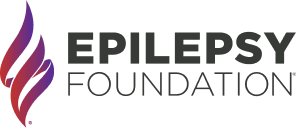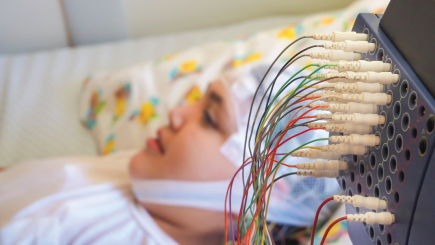Family Planning

Everyone's pregnancy is unique, and research shows that people with epilepsy can have healthy pregnancies and babies. Open and honest communication with healthcare providers is crucial throughout the process. It’s also important to take time and discuss family planning with your significant other and healthcare team before you start a family.
You may ask yourself questions like, “How many children do I want to have?”, “When do I want to start having children?”, and “Am I interested in having children?” Making a plan before you begin your journey is essential for your safety and happiness and will help you best manage your seizures no matter what you decide.
I was diagnosed with epilepsy. Can I still have children?
Yes. Thinking ahead can provide safe and healthy pregnancies for people with epilepsy. If you want to have a baby, planning is essential. Ideally, you should begin to plan your pregnancy as much as 12 months before trying to get pregnant.
Why is birth control important for people with epilepsy?
Effective birth control ensures that you decide all aspects of your pregnancy. Planning for your pregnancy helps minimize the risk of developmental issues for your baby. This also helps maintain your seizure control. Birth control will allow you to prevent pregnancy until you and your care team have set up a plan for a healthy pregnancy.
It is critical to know that some anti-seizure medications (ASMs) may interfere with your birth control, making your birth control less effective. Meanwhile, some birth control options may interfere with certain anti-seizure medications and could impact your seizure control.
How much folic acid is recommended before and during pregnancy?
Taking folic acid on a regular basis can help people with epilepsy. It also promotes healthy babies during pregnancy. Neural tube issues are a common risk factor when folic acid levels are low. Ensuring a regular diet or supplement of folic acid near the time of conception helps lower the risk of neural tube issues. Healthy neural tubes are vital for a developing baby’s brain and spine. Neural tubes even support the behavioral development of your baby.
Anyone with epilepsy that can have a baby should consider taking 1,000 mcg of folic acid daily as approximately half of pregnancies are unplanned. You can get folic acid as a prescription or over the counter. This amount should be taken before pregnancy, while you are pregnant, breastfeeding, or before having another baby.
Sometimes, there are cases in which a person may need to take a higher dose of folic acid. Please note that if you had a child born with neural tube defects (spina bifida or anencephaly) or other complications, your care team may ask you to take more folic acid to help prevent complications.
Most people are told to start taking a prenatal vitamin three months before trying to get pregnant. This amount is continued throughout pregnancy. This will give you an additional 800-1,000 mcg of folic acid daily, in addition to the folic acid you’re already taking.
Additional Information and Resources
- Pregnancy resources from the Epilepsy & Pregnancy Medical Consortium (EPMC)*:
- Pregnancy healthcare team
- Anti-seizure medications during pregnancy
- Epilepsy Diagnosis & Living With Epilepsy - Questions to Ask Your Doctor: Download the document for your appointment
- North American AED Pregnancy Registry
- Medication Resources
*The Epilepsy & Pregnancy Medical Consortium, an expert panel of leading epileptologists and OB-GYN researchers and practitioners, summarize recent research to inform people with epilepsy who are considering pregnancy, are pregnant, or are postpartum.
Resources
Epilepsy Centers
Epilepsy centers provide you with a team of specialists to help you diagnose your epilepsy and explore treatment options.
Epilepsy Medication
Find in-depth information on anti-seizure medications so you know what to ask your doctor.
Epilepsy and Seizures 24/7 Helpline
Call our Epilepsy and Seizures 24/7 Helpline and talk with an epilepsy information specialist or submit a question online.
Tools & Resources
Get information, tips, and more to help you manage your epilepsy.



